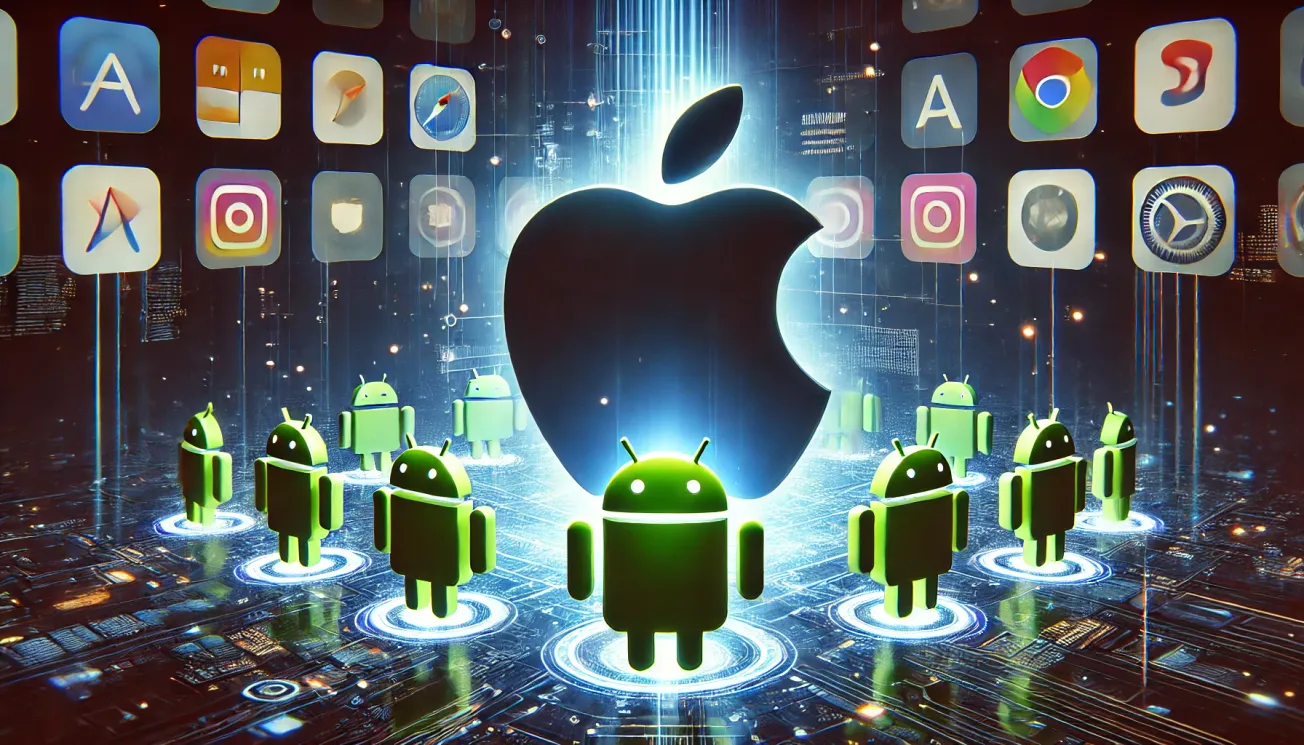Apple's iPhone holds a dominant position in the U.S. smartphone market, with iOS controlling 57.93% of the mobile operating system market as of February 2025. (Statcounter) This high market share raises an important question: Does the iPhone constitute a monopoly?
To answer this, we must first examine what legally defines a monopoly in the United States and analyze whether Apple’s dominance meets that definition.
What Constitutes a Monopoly?
Under U.S. antitrust laws, particularly the Sherman Antitrust Act of 1890, a company is considered a monopoly when:
- It controls a dominant market share in a particular industry.
- It uses anti-competitive conduct to maintain or expand its dominance, rather than competing fairly through innovation and consumer choice.
Importantly, having a large market share alone is not illegal. A company can be dominant without being a monopoly if consumers still have viable alternatives and if the company is not engaging in tactics that stifle competition.
Does the iPhone Fit the Monopoly Criteria?
Ways in Which the iPhone Could Be Considered a Monopoly
- Market Dominance in the U.S.
- While Apple’s global smartphone market share is only 27.78%, its U.S. share is significantly higher at 57.93% for iOS. In contrast, Android holds only 41.81% of the U.S. market.
- If we focus solely on premium smartphones (above $700), Apple’s share is even larger—over 80% in the U.S. market. This level of dominance in the high-end segment raises concerns about limited competition.
- Ecosystem Lock-in
- Apple has created a walled garden with its ecosystem, integrating services like iMessage, FaceTime, iCloud, and the App Store in a way that makes switching difficult.
- Features like blue vs. green bubbles in iMessage discourage users from moving to Android, reinforcing Apple’s dominance.
- The App Store’s exclusive control over iOS app distribution has led to legal scrutiny, with developers accusing Apple of using its power to impose high fees (up to 30% commission) and restrict alternative payment options.
- Control Over Hardware and Software
- Unlike Android, which is open-source and available on various manufacturers’ devices, Apple controls both iOS and iPhone hardware.
- This tight control gives Apple greater influence over the entire mobile experience, potentially limiting competition.
Ways in Which the iPhone Does Not Fit the Monopoly Criteria
- Existence of a Major Competitor (Android)
- While Apple has a majority market share in the U.S., Android remains a strong competitor with 41.81% of the market.
- Samsung, Google Pixel, and other Android manufacturers offer alternatives at various price points, meaning consumers do have choices.
- Price Competition Exists
- Apple does not have complete pricing power. It competes with Android devices on features, performance, and innovation, rather than just controlling supply.
- If Apple were a true monopoly, it could drastically increase prices without losing customers—but competition from Samsung and Google prevents this.
- No Proof of Anti-Competitive Conduct in the Smartphone Market
- While Apple faces antitrust lawsuits regarding the App Store and mobile payments, there is no clear evidence that Apple is blocking competitors in the smartphone market itself.
- The presence of strong Android alternatives weakens any monopoly argument.
Why Has Apple Avoided Monopoly Accusations for the iPhone?
Unlike Microsoft in the 1990s, which was sued for monopolistic practices in the PC operating system market, Apple has largely avoided similar scrutiny in the smartphone space. Here's why:
- Antitrust Regulators Focus on Broader Competition
- U.S. antitrust regulators look at the entire smartphone industry, not just iOS vs. Android in the U.S. Since Android dominates globally, Apple does not appear to be a monopoly on a worldwide scale.
- Regulatory focus has been on App Store policies, not the iPhone itself.
- The Smartphone Market Evolves Rapidly
- Unlike industries where monopolies entrench themselves for decades, the smartphone market is highly competitive and changes quickly.
- Apple’s dominance is based on consumer preference rather than forcing competitors out of the market.
- Apple's Brand Loyalty vs. Coercion
- Unlike monopolies that force consumers into using their products, Apple’s dominance is largely driven by consumer loyalty rather than a lack of alternatives.
- While its ecosystem creates lock-in effects, switching to Android is possible, which weakens monopoly arguments.
Final Verdict: Is the iPhone a Monopoly in the U.S.?
- Apple is dominant, but not a monopoly. Its 57.93% market share in the U.S. is high but not absolute, and Android remains a viable alternative.
- The walled garden and ecosystem lock-in raise concerns, but they do not meet the legal definition of a monopoly unless Apple is proven to engage in anti-competitive conduct.
- Regulatory scrutiny is growing, but for now, the iPhone itself has not been targeted—instead, the App Store and Apple’s control over software distribution have drawn more legal attention.



